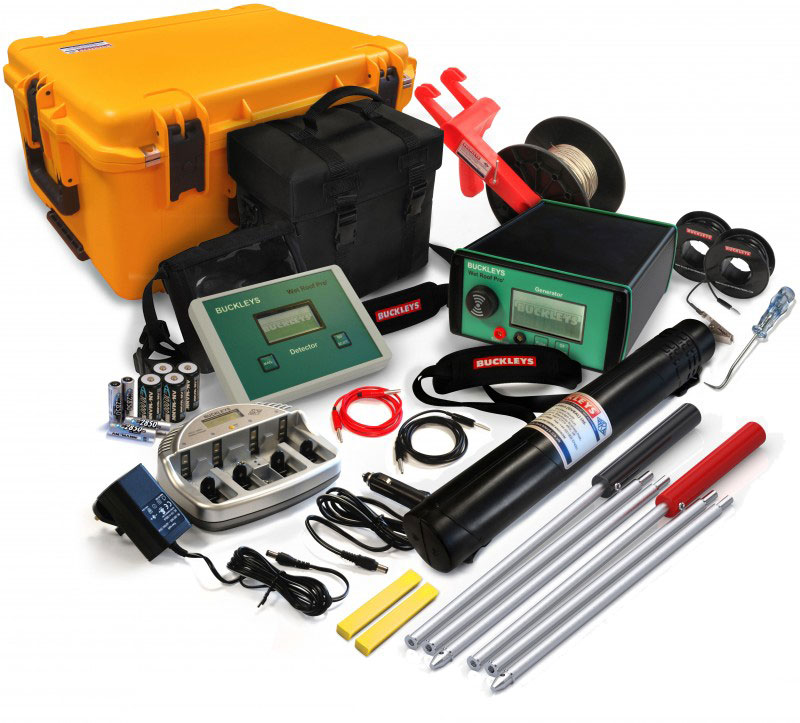How does it work?
Wet testing uses a conductive perimeter wire on the surface of the test area; covered with water and connected to a Pulse Generator which produces low-voltage current that propagates over the test area via the water.
An earth-return lead connects the Pulse Generator to a known earth point on the building’s structure. Pulse of current finds a path to earth through leaks and holes in the non-conductive roofing membrane. The Detector Unit measures this current flow and directs the operator towards the exact location of any leaks.
The roof’s entire surface must be adequately covered with water. Membrane thickness has no impact on the wet testing process.
Equipment
The Wet Roof Pro’ has been designed to locate leaks on flat roofing systems which incorporate dielectric membrane overlays such as single-ply, asphalt, bitumen and liquid applied roofs.
The Wet Roof Pro’ uses the ‘vector-mapping’ or ‘earth leakage’ method of locating faults. The conductive properties of water (from either rainfall or a hose) provide a medium through which electrical current can flow, allowing the user to pinpoint leaks. The kit comprises two main elements; a generator unit and a detector unit. The generator unit creates an electrical field across the roof surface via a ‘boundary wire’ which is positioned around the perimeter of the test area and connected to the positive terminal on the generator unit. The negative terminal is connected to a suitable earth on the building’s structure.
Leaks in the roof membrane allow water to penetrate to the building’s structure; creating a short circuit. The detector unit is connected to two hand-held test probes which are held in contact with the roof surface.
By measuring the voltage differential between the test probes, the detector unit is able to direct the operator to the location of the leak.

